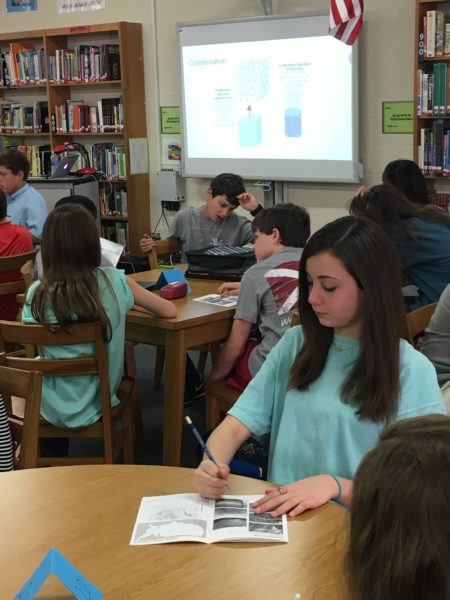Preparing to Launch
Preparing to Launch
By Faye Miceli
6th Grade
Pizitz Middle School
In our science classes, we have recently done many experiments and activities involving weather.

Students engaged with the material in a special workbook concepted by Bill Murray and designed by Scott Martin.
Once we understood air, we could start learning about the atmosphere. We found out that the air changes as we travel through different layers of the atmosphere. In our Elevator to Space activity, we discovered what air was made of, and that not all samples of air contain the same elements. In our solar angle lab, we learned that the sun’s angle of light and beam spreading effects how air is heated, and the differences in Earth’s temperature. We then experimented by heating different Earth materials (sand, soil, water, air) to show how heat transfers through different materials.

Faye Miceli is a sixth grader at Pizitz Middle School. She found this cool barometer, thermometer and hygrometer at a garage sale!
Last week, we defined density by experimenting with gases and liquids. We also discovered how heat affects matter and its density by experimenting with convection in a convection chamber. In the chamber, we created a convection cell using the heating and cooling of air. This helped us discover how heat and density are related, and how heat affects air’s density. As we connect all of these activities, we are beginning to understand how weather is created. Understanding how air moves and how it affected by the sun’s heat will help us find the perfect conditions to launch our balloon.
This week, Meteorologist Bill Murray is coming to help us learn how to use our knowledge to pick the best launch day. All of our research will definitely pay off as we see our weather balloon soaring high in the sky!

















